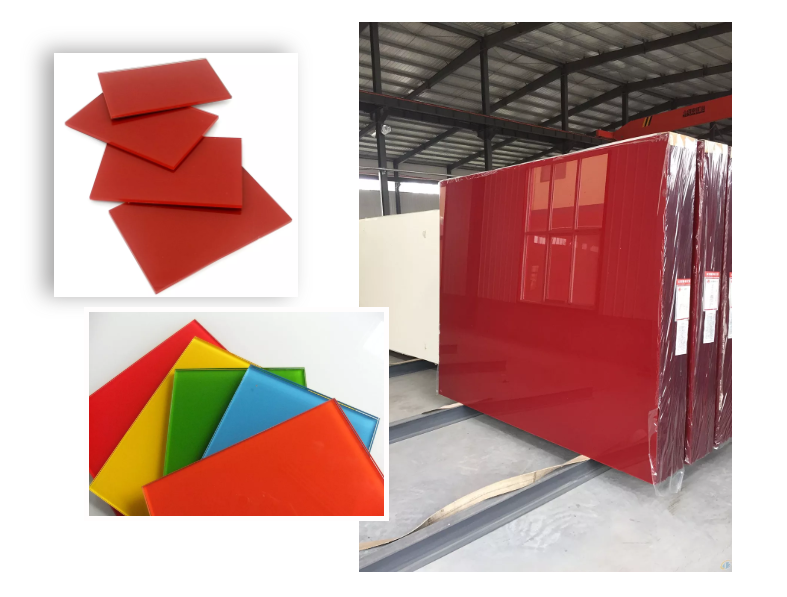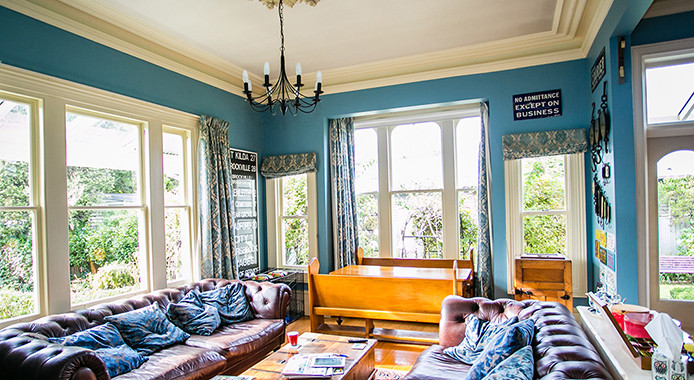Decorative glass is a glass product specially used for decoration, most of which have been deep processed, including embossing, frosting, painting, etc. As people’s needs continue to expand, more and more types of decorative glass, today I will introduce you to the classification of decorative glass.
1. Sandblasted glass
Basically similar in performance to frosted glass, changing frosted to sandblasted. It is a process of mixing emery with water and spraying it on the surface of glass with high pressure to polish it. The two are visually similar, and many owners and even decoration professionals confuse them. Multi-application indoor partitions, decorations, screens, bathrooms, furniture, doors and windows, etc., to make life more beautiful and emotional.

2. Frosted glass
Any glass that processed by frosted artwork can be called frosted glass. Frosted glass, as a hazy art glass, adds beauty to the space decoration. It can be described as a new darling of art glass and icing on the cake for art glass. With the development and growth of the decoration industry, art glass has increased the vitality of space decoration due to its good irreplaceable decorative effects of light transmission, visibility, heat insulation, sound insulation, environmental protection and other materials, and has been loved by people.
Frosted glass is almost ubiquitous in decorative spaces. Background walls, ceilings, dining tables, screens, entrances, partitions, floors, stairs, doors and windows, glass coffee tables, etc. are widely used in homes, hotels, bars, KTV, cafes, large outdoor The decoration of landscaping. Frosted glass organically combines the interior and exterior landscape through art decoration, which greatly improves the space decoration grade.
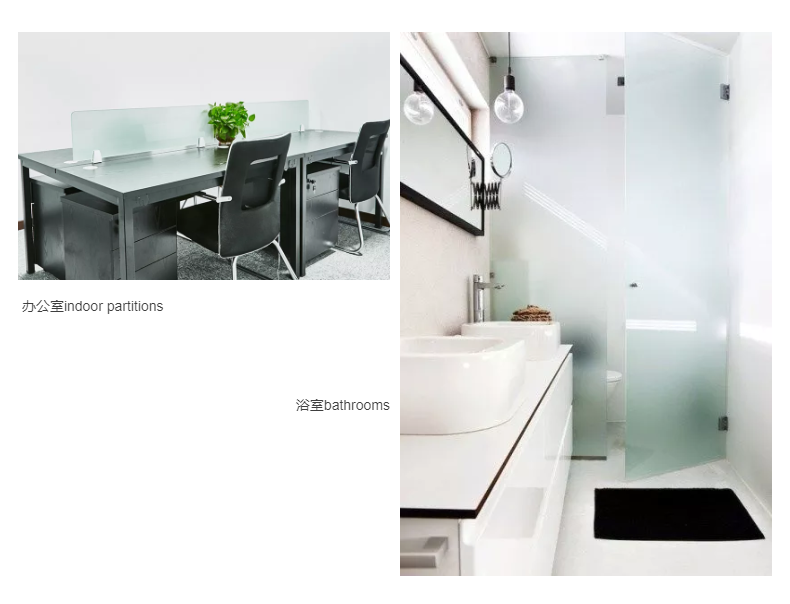
Sandblasted glass is different from frosted glass.
Sandblasted glass: A process of mixing emery with water and spraying it on the surface of glass with high pressure to polish it.
Frosted glass: a production process in which the surface is corroded by chemical agents through immersion. It is mainly used for screen printing and can be painted on the glass surface.
3. Embossed glass
a kind of flat glass made by calendering method. The biggest feature is light transmission and opacity. The patterns and patterns on the glass are beautiful and exquisite.
Mainly used in indoor partitions, door and window glass, bathroom glass partitions, etc.
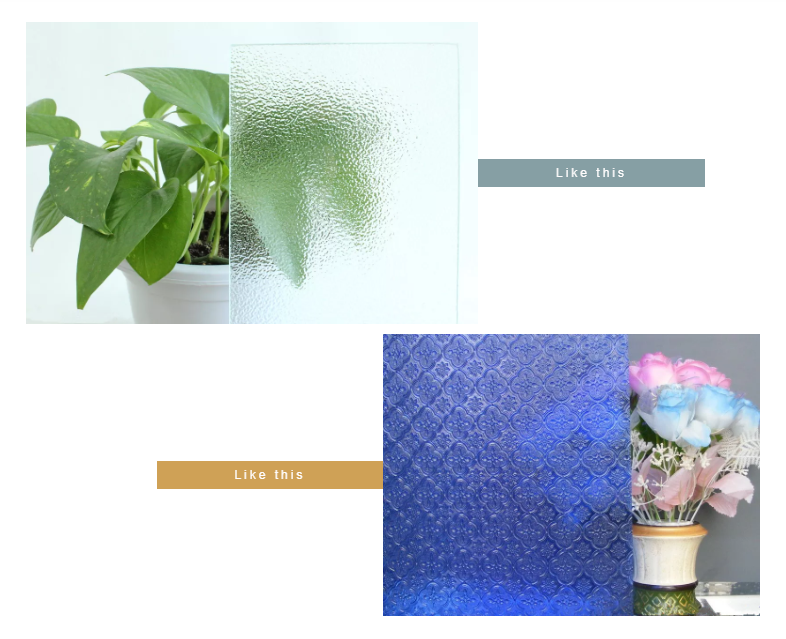
4. Screen printing glass
It is a process of glass processing. The screen printing master draws the required patterns on it; there are manual screen printing and machine screen printing. The reason why the screen printing room is separated from other factories is that the screen printing room must be very clean, and all the people working inside must change their shoes to enter. The screen printing room is also called the dust-free screen printing room.
Toughened silk-screen glass: why go through the tempering furnace? There are high-temperature screen printing inks and low-temperature screen printing inks for screen printing. High-temperature screen printing inks must be screen printed before passing through the tempering furnace. In this way, the ink is fused with the glass surface, and then it is impossible for you to wipe off the ink.
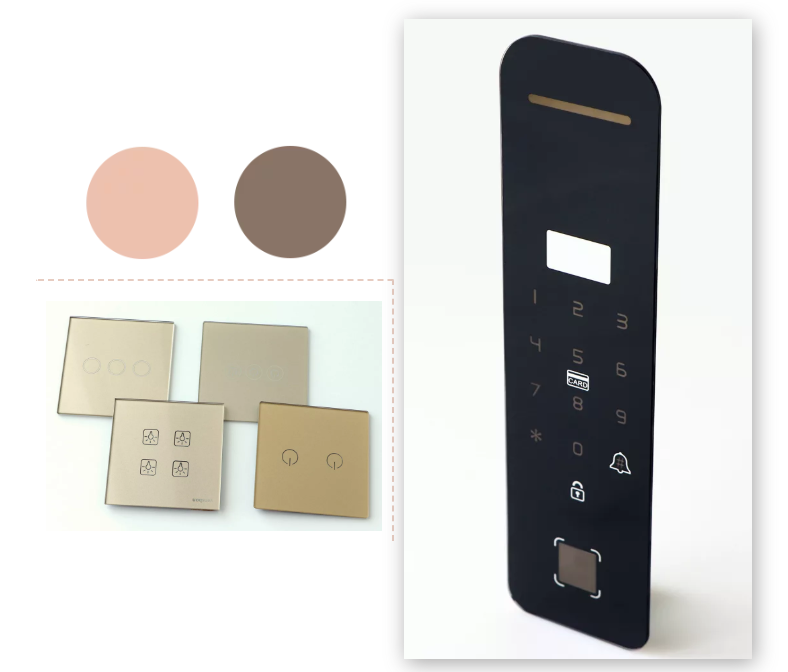
5.Painted glass
Painted glass is a highly expressive decorative glass variety, which can be embodied by spraying, roller coating, screen printing or shower coating. Used for image walls, private spaces, etc.
Painted glass is also called back-painted glass in the industry. It is painted on the back of the glass and baked in a 30-45 degree oven for 8-12 hours. In many places where baked glass is made, natural drying is generally used, but the adhesion of the naturally dried paint is relatively small in a humid environment. Easy to fall off. Environmental protection requirements and people’s health and safety needs, pay attention to the use of environmentally friendly raw materials and paints when making baked glass. Personally recommend environmentally friendly and high temperature painted glass.
